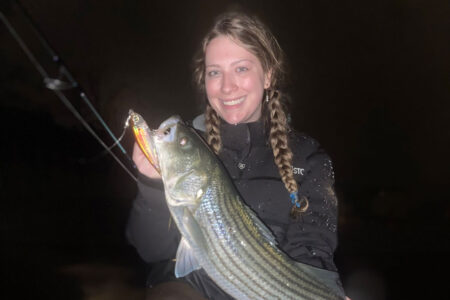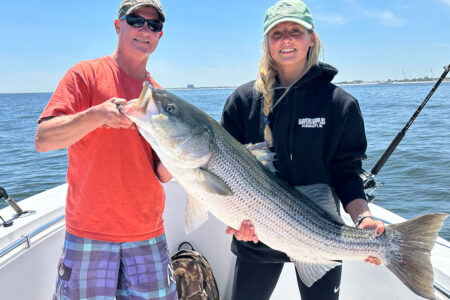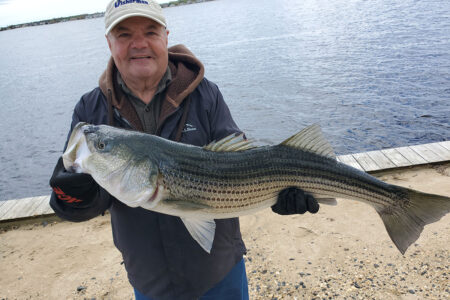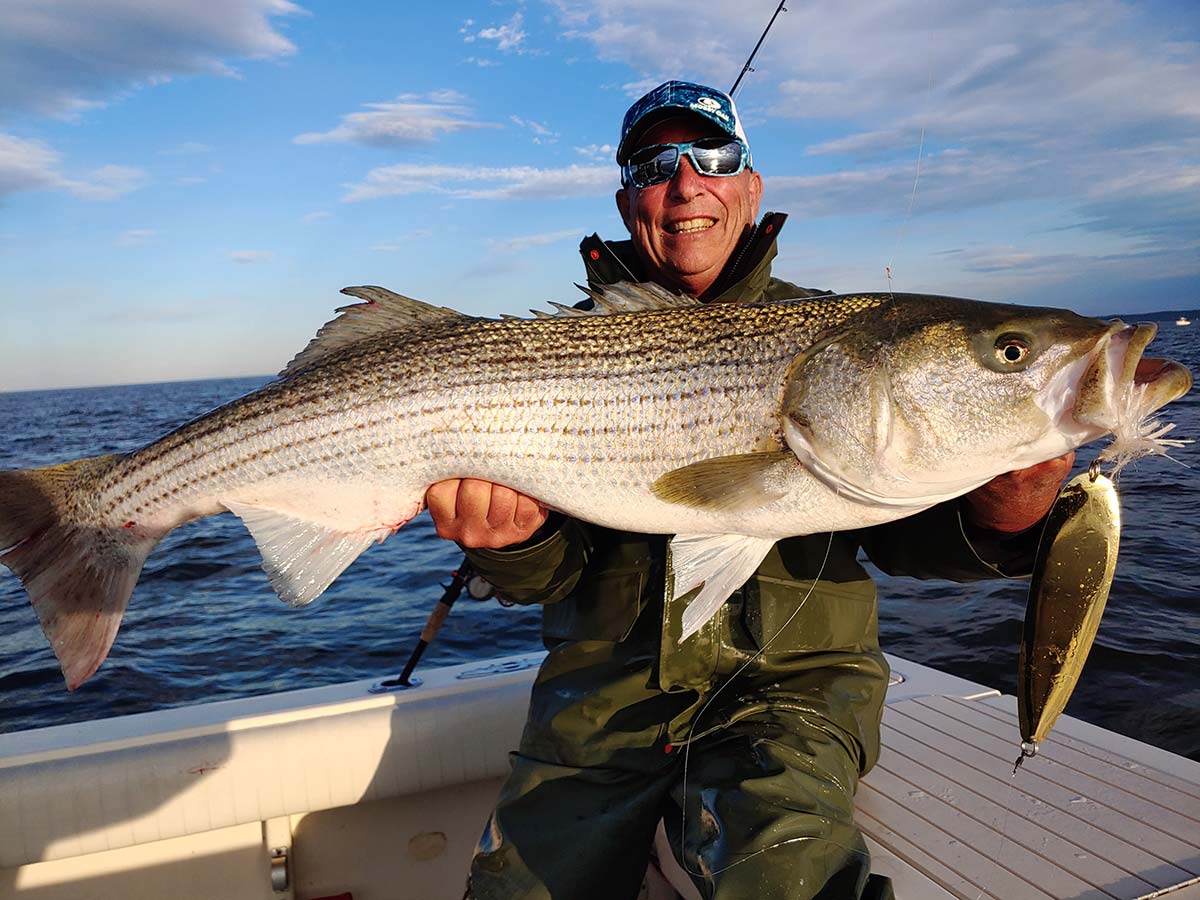
Big baits produce big bass and the best way to catch them is with big artificials.
In 1965, at the age of 20, Tony “Maja” Arcabascio starting cutting pieces of stop signs to make big bunker spoons to imitate adult menhaden. “We used to go to the junk yard and find old stop signs and cut them down,” Tony said years later, adding “We even used old Ford headlight rims that we cut with snips.”
Fast forward to today and his son Anthony is still doing the same manufacturing big drift spoons to imitate bunker to catch big bass.
“A few years back, one of my manufacturers showed me a new lure that they use for largemouth bass and musky in lakes,” Anthony said, describing the 6-inch curved spoon used for stationary fishing. “Since jigging and casting rather than trolling heavy gear has been quickly gaining in popularity, I figured why not try to introduce this freshwater tactic to saltwater fishing,” he added.
Get My Drift
Anthony Maja, Jr. had to develop a spoon that was bigger and stronger with different components that wouldn’t rust. “I came up with a 9-inch spoon that initially weighed about 3-1/2 ounces but was not happy with the strength of the spoon,” he said, explaining “So, I went back to the testing phase and came up with a 4-1/2-ounce spoon with a 225-pound split ring and a barrel swivel that can also take 200 pounds of pressure. I then added a 5/0 Mustard treble hook with synthetic hairs to boot.”
According to Maja, Jr. the process took about a year and a half to get it exactly how he wanted it. “Just to prove its strength a friend of mine hooked up and landed two yellowfin tuna with it, both estimated over 80 pounds,” Anthony said, adding “Right then I knew this spoon was exactly what I wanted it to be. If they can handle an 80-pound tuna, these things are indestructible.”
“I do not call them flutter spoons like many other manufacturers because I figured with the new strength and weight of the spoons, I would call them drift spoons,” he explaining, noting “Because these will sink even with a very strong drift while others would just flutter away without getting deep to where the bass are feeding.”
Drift spoons and flutter spoons have now taken the industry by storm. In the last few years, the magnum and super magnum flutter and drift spoons can be found as part of every boater’s arsenal, especially when fishing in Raritan Bay in the spring. These are 8- and 9-inch spoons which are for the most part brass pieces that are nickel plated that come in many have colors.
As Anthony said, these spoons were originally designed for freshwater bass fishing. Brooks Woodward of Nichols Lures based out of Thomasville, GA gets the credit for being the originator of the Ben Parker Magnum 8-inch, 3.5-ounce, and Super Magnum 9-inch, 4.5-ounce flutter spoons now being produced by different manufacturers under different names on the market today. “We initially created the magnum spoon with a Tennessee River guide, Ben Parker, hence the name, in the summer of 2013,” Woodward said, adding “After using our 4- and 5-inch Lake Fork flutter spoons to catch schooling largemouth on Kentucky Lake, Ben requested that we make a proportionally larger version, as gizzard shad and other baitfish on the Tennessee River tend to get to ‘magnum’ sizes.”
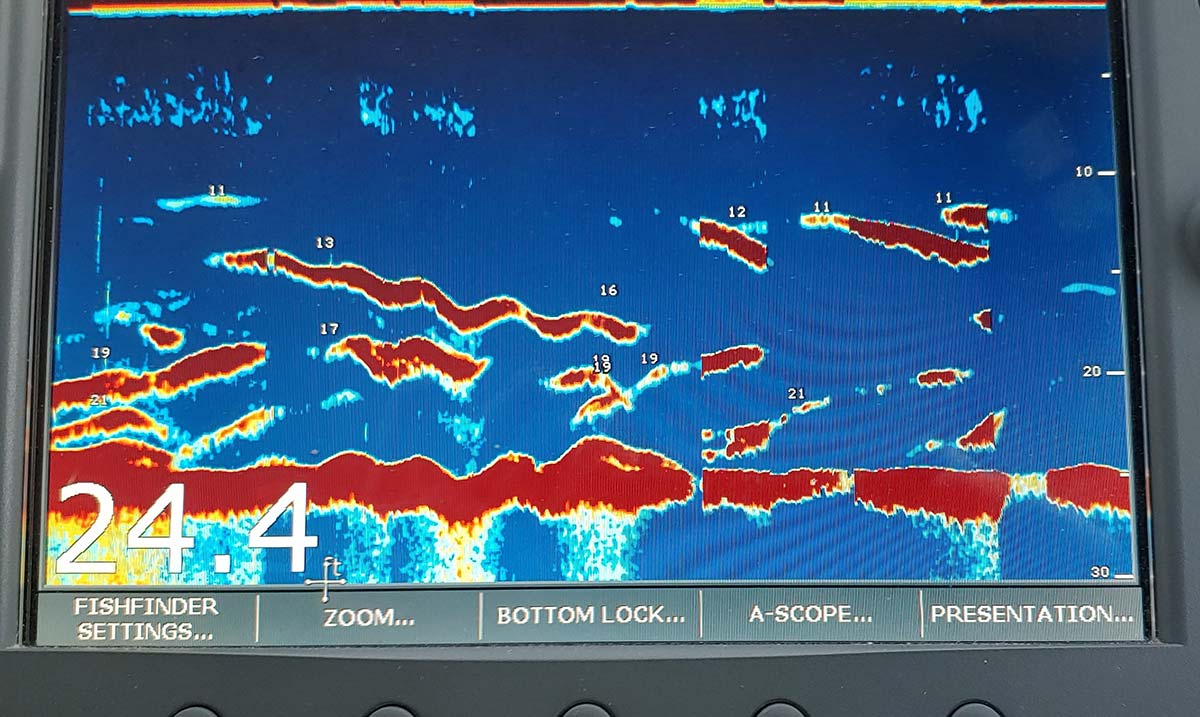
Fresh To Salt Crossover
Woodward said they ordered an 8-inch prototype to be made. “After initial hesitation, the thing looked ridiculous, especially for the largemouth market, Ben convinced us to order a first run and put it into production,” Woodward said, explaining that they gave half of the initial stock away to pros fishing in an FLW Tour ledge event on Kentucky Lake. “After most of the top 10 anglers in the event used the spoon, we had to hold on tight and make as many as possible,” he said, adding “We expanded the lineup with the 9-inch model in 2015, again, for largemouth. We had traditionally been selling a number of these spoons on Lake Lanier for stripers, but we never dreamed that saltwater stripers would love them as much as they do!”
From the Major League Fishing archives June 27, 2014, Curtis Niedermier said “At the final Walmart FLW Tour stop of 2014, the best ledge fishing pros in the business have revealed the next must have lure for offshore fishing. You’ve seen the ‘big spoon’ which was unleashed to the world in a bass fishing TV show filmed on Kentucky Lake a few years ago. But the new Ben Parker Signature Series Magnum Spoon makes the old one look like a baby spoon.”
At almost 8 inches in length, 2 inches wide, and weighing in at about 3-1/2 ounces, Niedermier described the Magnum Spoon created by professional bass angler Ben Parker as looking more like a saltwater rig or something tied to the line of a northern muskie hunter than a weapon on the bass tournament trail in Tennessee. “Several top 20 pros have been using it. Others might be using it but not talking. Pros who don’t have a Magnum Spoon are quite literally begging their competition for a spare,” Niedermier added.
Flutter and drift spoons work so well in the spring in Raritan Bay because it is home to three big baits that appear that are the dominant food source for both pre and post spawn bass, anadromous alewife, blueback herring and adult bunker. By the end of March, the alewife herring and adult bunker have begun to enter the bay with their populations increasing quickly through April. By the end of the month these two baits are joined by the anadromous blueback herring.
The alewife and blueback are anadromous, meaning they spend most of their yearly life in the ocean but then return to freshwater to spawn. Both are big baits having an average length of 10 inches but can get as big as 16 inches, entering the bay by the hundreds of thousands as they seek out the freshwater of the Raritan, Hudson, Shrewsbury, and Navesink rivers to spawn. The adult menhaden or bunker can be as large as 15 inches long and resemble the alewife in coloration but have a much wider girth.
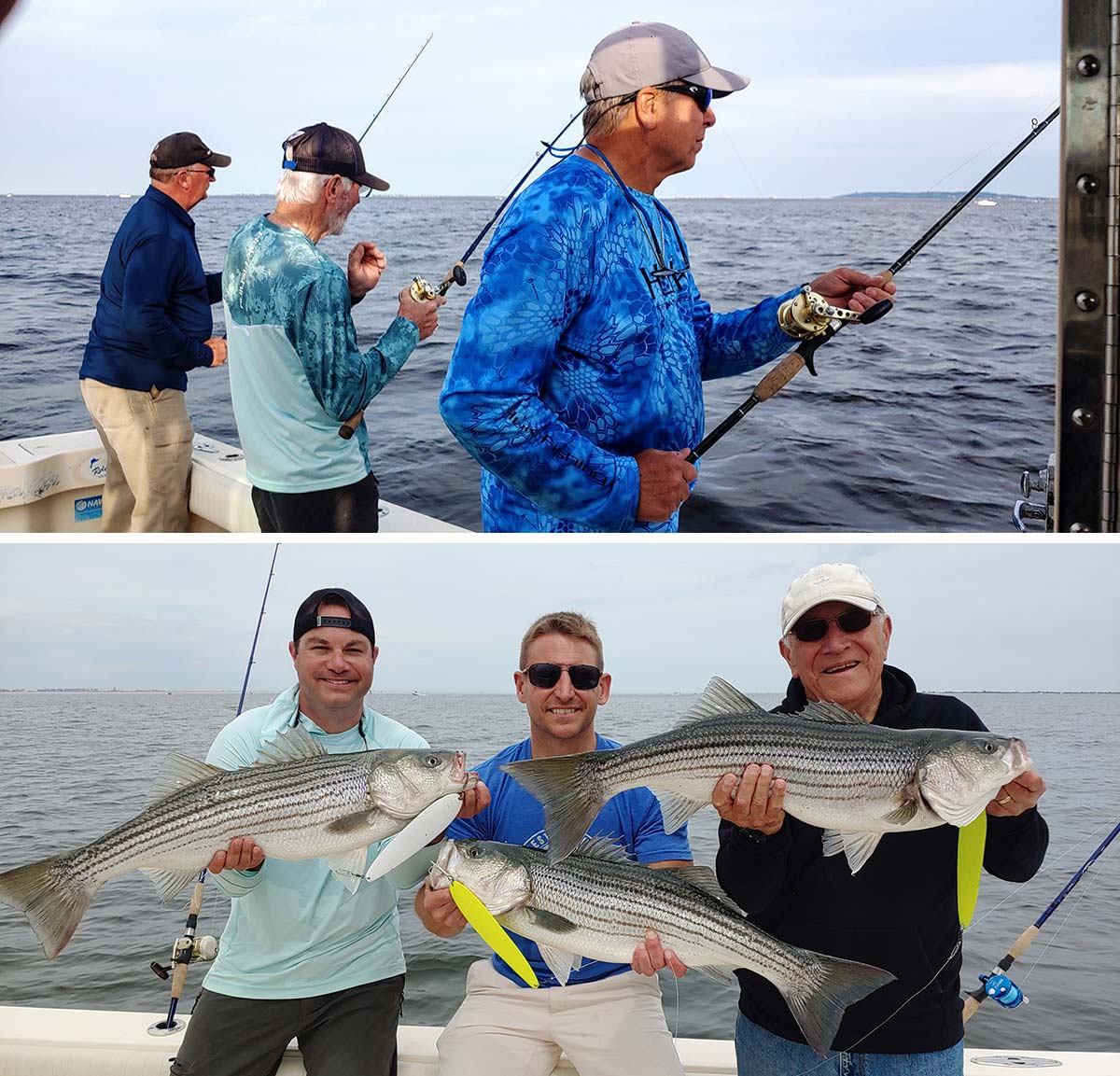
A New Presentation
Credit for introducing these spoons in our area goes to Mike Gleason of TAK Waterman in Long Branch. “I came across the Ben Parker spoons because of largemouth bass fishing,” Gleason told me, adding “I really liked the profile and thought it was a perfect match to an adult bunker. I started fishing this bait in the fall of 2015 when I was fishing with Rob Radlof. We were on a bite with suspended fish and we were having trouble getting them to eat a shad.” Gleason said that was the perfect time to test out the lure for striped bass. “The first fish I caught was 28 pounds and we were psyched,” said Gleason, recalling how they proceeded to score heavily on the stripers for another week.
“Rob and I knew we found something special and kept it quiet and just between our friends for a couple years until Nick and I opened up TAK,” he said, noting “It quickly became one of our go to lures because of how often and aggressively it gets bit.”
One reason why these spoons have become so popular is that they are pretty much effortless to fish and when the strike occurs it is a violent one. A take by a big bass will have an unsuspected or first timer angler doubled over the gunnel in no time. The bass will also bulldog you adding to the excitement of the fight. The spoons are also very versatile and can be fished or jigged in a variety of ways even though they are not designed to be cast out.
When bass are stacked up under your boat vertical jigging will be the technique to use. When jigging vertically drop the spoon to the bottom and then snap it up by lifting the rod, and then lower it back, following the line down until it comes tight and then repeat. On the drop it is best to allow a little slack in the line to allow the spoon to float down naturally; this will cause it to flutter from side to side looking like an injured bunker falling out of the pod. This is done by following the line down with the rod tip but just leaving a little bit of slack to not hold the spoon back from falling freely. To find better success, you may need to develop the proper timing and feel as the bass will often hit on the drop.
| MAKES & MODELS |
| Other companies that are popular producers of flutter spoons in the local market include Just Saying Sportfishing, AllPro Tackle, and Ahern Tackle. TAK Waterman will soon be introducing exclusive 10-inch, 5-ounce Fish Sandwich spoons in two color options chartreuse/white and chrome both American made. Backbay Plugs is also introducing a flutter spoon this season as has Tsunami with their Pro Flutter Spoons that just hit shelves. In fact, Tsunami’s super-sized 11-inch spoon in both 6 and 7.5 ounces looks like it is a sure winner for fishing deep in the ocean heading into the month of June. |
When the bass are more spread out, or in windy conditions, use a long scope presentation. To do this let line scope out from your reel to get the spoon to the bottom as the wind pushes the boat away from the spoon. The windier it is the more scope you will need. Once scoped out and touching bottom hold the rod low to the water and sweep or jerk the rod forward and then let it drop back repeating this motion. When ready to retrieve work the entire water column in this manner from the bottom to the top, and don’t be surprised if a bass follows the spoon and commits right before you pull it out of the water.
Conventional rods in the 7-1/2- to 8-foot range work best for jigging flutter spoons as the longer rod allows for more lifting of the spoon on the upswing resulting in more downward flutter time when you lower the rod. I like to use the 7-foot, 9-inch moderate action St Croix Legend or older Mojo series rods. Heavy monofilament leaders in the 50- to 60-pound range will work fine as the bass are not leader shy. A 175-pound Tactical Anglers power clip can also be used or you can tie direct to the power swivel the spoons come with. For colors I always fish gold, chartreuse, white, and bunker. When the water is murky from heavy spring runoff as it can often be in the bay chartreuse rules.
